FOOTPRINTS – By the numbers. The next few articles I will address the environmental impact (or FOOTPRINT) of some of our normal, everyday lives – buying and laundering clothes, our digital world, food production and consumption, and water use. Some of the numbers are astounding but we cannot address what we do not know. I’ll start with the fashion industry.
THE FASHION INDUSTRY’S DIRTY SECRET
BY Allan Maynard, MSc.

OK – I know this article will not be very popular with some readers. Who does not like a little ‘retail therapy’ – a family shopping outing, touring the shops after dinner when travelling, and now, even more alluring – shopping on-line? One click – and a few days later a package arrives. And if it does not fit, we can send it back to an uncertain destiny. While I detest shopping for the most part, I also have enjoyed buying new clothes.
But behind the glamorous ads and the alluring clothing boutiques, the garment industry has a dirty secret. I acknowledge that the title of this article is based on a highly recommended documentary produced by BBC entitled “FASHION’S DIRTY SECRETS” – see link at the end of this article.
WHAT ARE CLOTHES MADE FROM
Clothes today are made from a wide range of different materials. Traditional materials such as cotton, linen and leather are still sourced from plants and animals. But most clothes are more likely to be made of materials and chemicals derived from fossil fuel-based crude oil – including polyester, nylon, acrylic, spandex, etc.). See figure below (note – cellulosics refers to wood-based fibers such as rayon and bamboo):
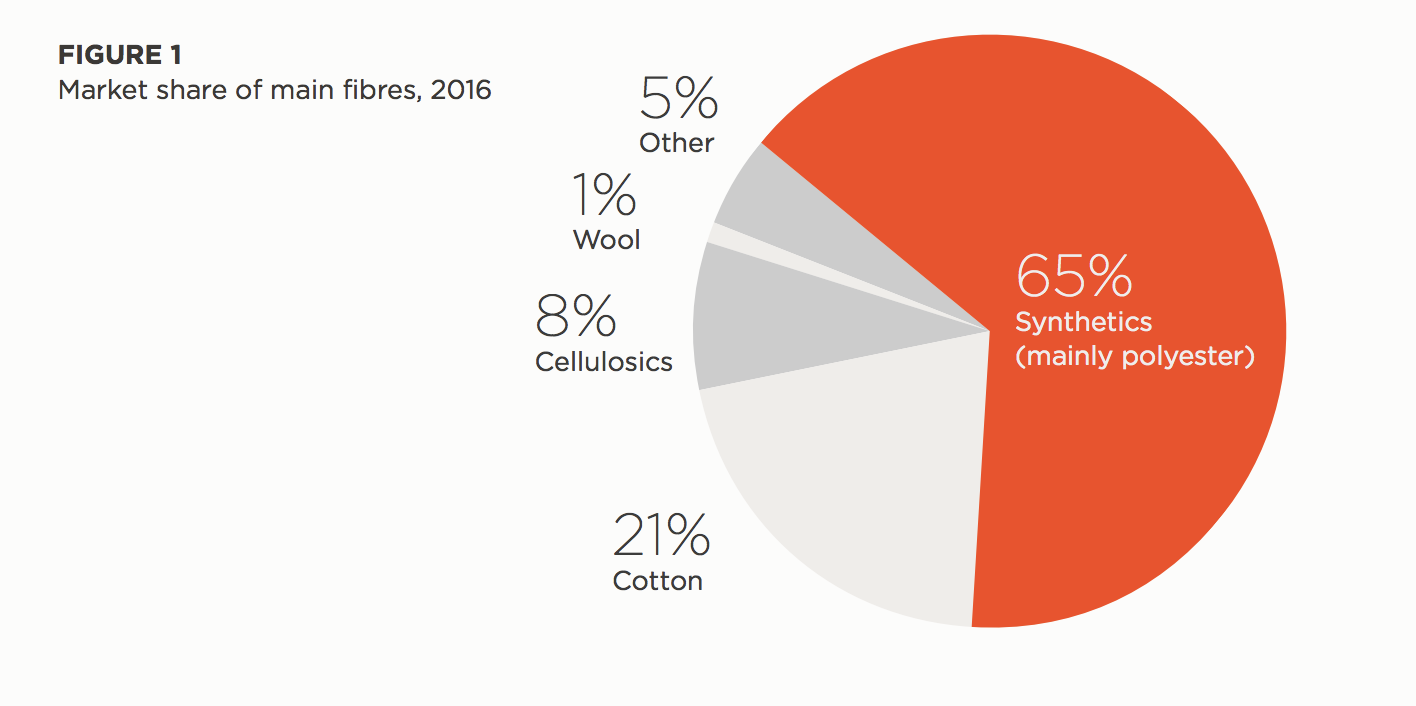
BY THE NUMBERS
There is an oft-cited factoid that “fashion is the second most polluting industry on the planet.” It is difficult though to find actual proof of this and it depends greatly on the exact definition of “polluting”. It does not matter. The numbers are staggering. Here are some – not all:
- 10% of global greenhouse emissions (CO2 and methane) come from the garment industry – more than from all air flights and shipping combined.
- The clothing industry is the second largest consumer of water worldwide (1.5 trillion liters per year). This is especially alarming when considering that almost one-billion people do not have access to reliable drinking water.
- Example re: water use – it takes 8,000 litres of water to create one pair of jeans / 3000 litres for one T-shirt/ 20,000 litres to make one kg of cotton.
- Over 20% of all chemicals produced globally are used in the textile and apparel industries – as clothing fibers but also in clothing manufacturing (tanning, dyeing, bleaching, and wet processing).
- All in all, the fashion industry is responsible for 20% of all industrial water pollution worldwide.
- Only a small percentage of clothing that is no longer wanted by the purchaser is in turn donated or recycled. The rest goes to landfills. About 6% of waste in landfills comes from discarded clothing. The equivalent of one garbage truck full of clothes is burned or dumped in a landfill every second.
- Every time we wash a synthetic garment around 2000 microfibers are released into the environment – resulting in an estimated 500,000 tons of microfibers entering the oceans per year. (see related article in this site on micro- and nano plastics).
- Overall, microplastics are estimated to compose up to 31% of plastic pollution in the ocean.
- On average, people bought 60% more garments in 2014 than they did in 2000 but only kept these clothes for half as long. The main culprit is FAST FASHION – see comments below.
THE ARAL SEA
The Aral Sea crisis provides a very clear example of the impact of the garment industry. The Aral Sea, once considered the 4th largest lake in the world, is situated between Kazakhstan in the north and Uzbekistan in the south. It began shrinking in the 1960s and had largely dried (shrunk by more than 90% of its 1960 size) up by the 2010s. The reason — In the 1960s, the Soviet Union undertook a major water diversion project on the arid plains of Kazakhstan, Uzbekistan, and Turkmenistan. The region’s two major rivers, fed by snowmelt and precipitation in faraway mountains, were used to transform the desert into farms mainly to grow cotton. This outcome is considered one of the world’s most significant ecological disasters.
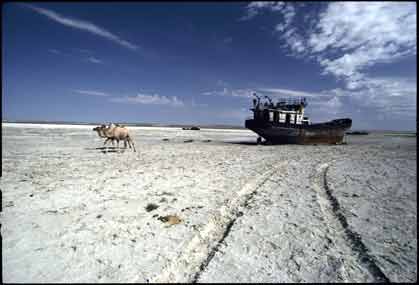
The Aral sea has shrunk by more than 90% of its size since 1960.
THE MOST POLLUTED RIVER IN THE WORLD
The Citarum River on the island of Java (Indonesia) is considered the most polluted river in the world. Every day, no less than 20,000 tons of waste and 340,000 tons of wastewater, mostly from 2,000 textile factories, are discharged into the once clear and pristine waterways. I saw this for myself as my company had a laboratory in Indonesia. Its surface is completely covered by an unimaginable amount of waste and trash. And yet, the Citarum River is vital for the 25 million people who daily depend on it for agriculture, water, and electricity. It is a shocking demonstration of the unchecked and poorly managed textile industry producing many familiar brands available all around the world.
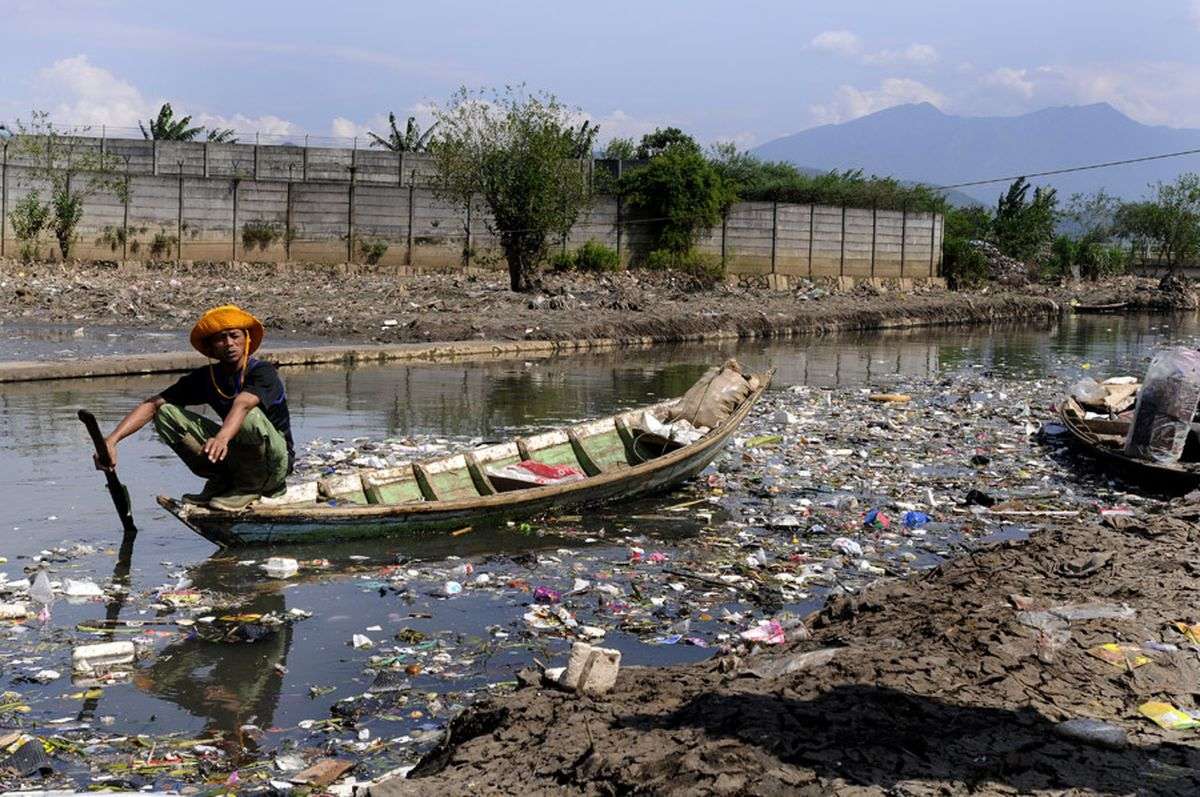
The Citarum River – receives mostly untreated waste from over 2000 textile factories
WHAT CAN BE DONE?
Basically, the fashion industry is a clear example of global environmental injustice. With the rise of globalization and growth of a global economy, supply chains have become international, shifting the growth of fibers, the manufacturing of textiles, and the construction of garments to areas with cheaper labour. Out of sight – out of mind – but the human and environmental health risks associated especially with inexpensive clothing, are hidden throughout the lifecycle of each garment. From the growth of water-intensive cotton to the release of untreated dyes into local water sources, to workers’ low wages and poor working conditions; the environmental and social costs involved in textile manufacturing are widespread.
From my viewpoint – this is an international trade issue requiring some kind of global undertaking – An ecotax? Trade embargos against offending countries? International standards around sustainability?
As consumers – we can demand responsible clothing production, but most won’t do that. We can also buy less. I know – easier said than done. People love to shop. But do we really need FAST FASHION? Fast fashion is a term used to describe the readily available, inexpensively made fashion of today. The word “fast” describes how quickly retailers can move designs from the catwalk to stores, keeping pace with constant demand for more and different styles. Fast fashion is especially appallingly irresponsible.
A few suggestions that should at least make us feel less powerless:
- Check the labels – and try to buy clothing made from natural fibers grown sustainably. Or even better – from recycled fibers.
- If possible, buy high quality clothes that will last longer. This is a challenge though for many in this world who cannot afford this option.
- Buy less clothing – and keep the clothing in use longer. I still have a few T-shirts from the 1990s – old favourites.
- Recycle unwanted clothing – via charities. It is my understanding that charities sell what they can from clothing donations and send the rest to fiber recycling operations.
- Launder less – OK – I am no expert on laundry, but I would guess that many households launder clothing too frequently. Younger children can present a challenge in this regard. From my own experience and in talking to other parents and grandparents, young people often find it easier to place clothing just worn into a laundry bin rather than folding them up and wearing them a number of times more. Apparently – the recommendation for jeans is at least 6 wears before laundering. That suits me!
Many clothing brands claim to be addressing this issue with sustainability claims. Some are even producing clothes that need less laundering. We need to support those that can demonstrate sustainability.
OK – now I need to go out and buy a new golf shirt. I better make sure I follow my own advice. Here’s one – organic cotton. I am not sure about the pants though. I would have to launder them too frequently.
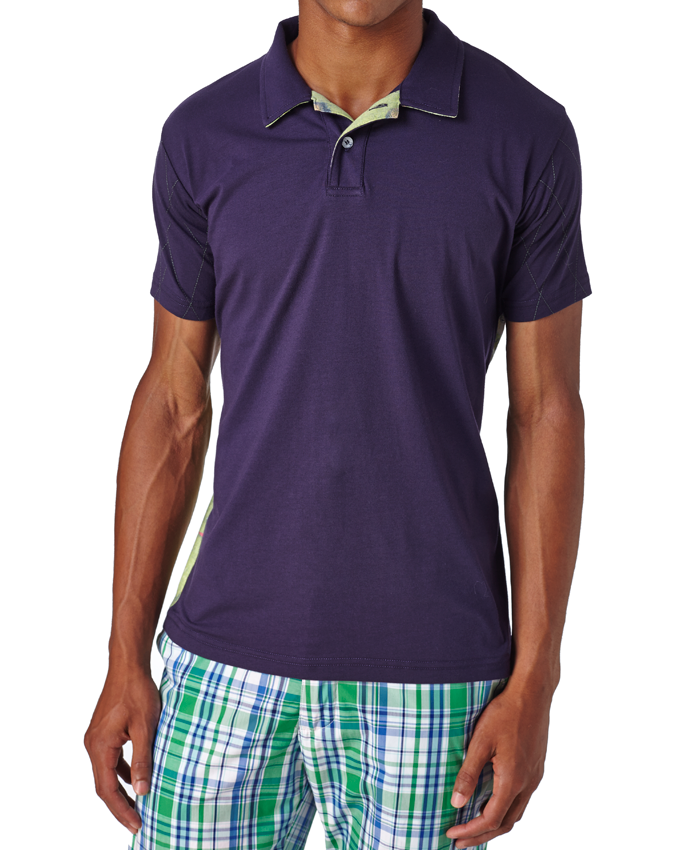
https://www.cbc.ca/player/play/1459009091541
https://www.commonobjective.co/article/what-are-our-clothes-made-from
http://www.columbia.edu/~tmt2120/environmental%20impacts.htm
http://www.columbia.edu/~tmt2120/introduction.htm
https://theconversation.com/humans-drained-the-aral-sea-once-before-but-there-are-no-free-refills-this-time-round-32513
https://thediplomat.com/2018/04/indonesias-citarum-the-worlds-most-polluted-river/
https://www.theguardian.com/lifeandstyle/2018/mar/31/less-laundry-less-often-how-to-lighten-the-washday-load-on-the-environment
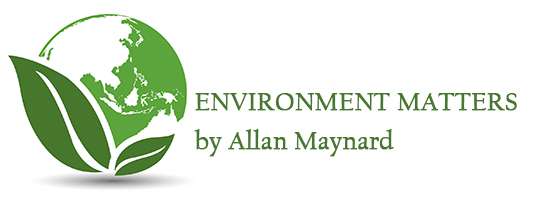
Another great article Al, thank you. These are indeed complicated issues. While the garment industry provides massive employment in many third world countries eg. Vietnam, Cambodia, etc. it does contribute the pollution in those same locals.